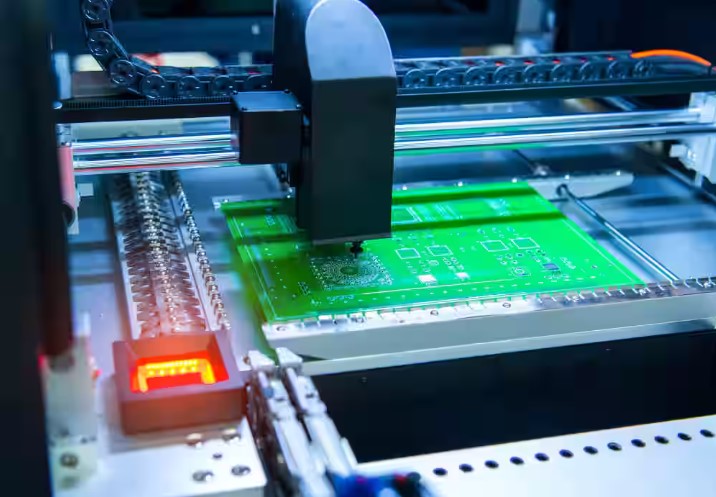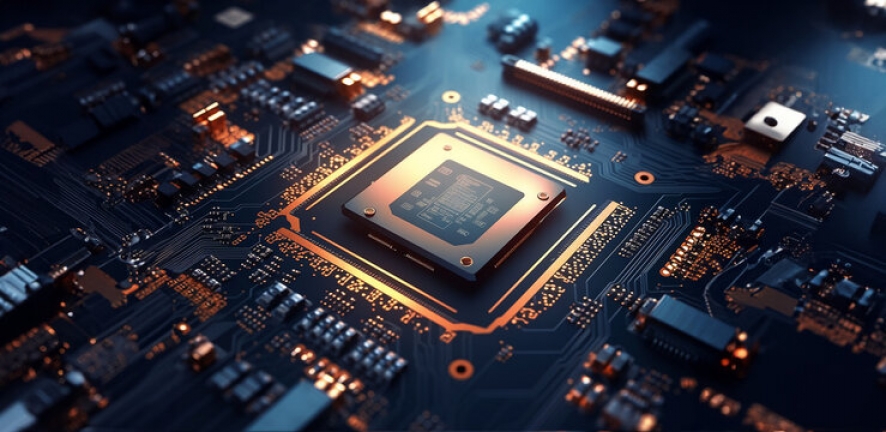How Is PCB Technology Transforming Printed Electronics?
 Emily Johnson
Emily JohnsonPCB technology is at the forefront of a technological revolution in printed electronics. As the backbone of most electronic devices, PCBs are integral to both their functionality and efficiency. With advancements in manufacturing techniques and design capabilities, PCBs are becoming more versatile, leading to significant transformations in various industries. In this article, we'll explore how these technological changes are reshaping the landscape of printed electronics and what it means for the future.
What Is PCB Technology?
Definition and Basics
Printed Circuit Board (PCB) technology involves the creation of boards that mechanically support and electrically connect electronic components. These boards consist of conductive pathways etched onto a non-conductive substrate, allowing for the integration of complex circuitry within a compact form factor.
Evolution and Historical Context
The development of PCBs dates back to the early 20th century. Initially used for simple circuits, PCBs have evolved dramatically, driven by advancements in materials science, electronics, and manufacturing techniques. Today’s PCBs are capable of supporting high-speed signals, complex multi-layered circuits, and even flexible designs.

How PCBs Are Made
Traditional PCB Manufacturing Process
The traditional process involves several steps: designing the circuit board layout, printing the circuit design onto a substrate, etching away excess copper, and finally, assembling electronic components. This process has been refined over decades to enhance precision and efficiency.
Advances in PCB Fabrication Techniques
Recent innovations include the development of advanced materials and techniques, such as:
High-Density Interconnect (HDI): Allows for more complex and compact circuit designs.
Multi-layer PCBs: Facilitate higher functionality and more intricate circuitry.
Advanced Substrates: Improved materials that enhance performance and durability.
Key Technologies Transforming PCBs
Flexible and Rigid-Flex PCBs
Flexible PCBs can bend and conform to various shapes, making them ideal for applications requiring space-saving and adaptability. Rigid-flex PCBs combine rigid and flexible elements, offering both structural support and flexibility.
3D Printing and Additive Manufacturing
3D printing technology is making its mark in PCB manufacturing, allowing for the creation of complex and customized circuit designs. This method supports rapid prototyping and the production of unique, intricate structures that traditional methods cannot achieve.
High-Frequency and High-Speed PCBs
With the rise of high-speed data transmission, high-frequency PCBs are essential for maintaining signal integrity. These boards use advanced materials and design techniques to handle high-frequency signals with minimal interference.

Impact on Circuit Board Design
Design Flexibility and Innovations
Advancements in PCB technology have greatly enhanced circuit board design flexibility. Engineers can now create more intricate designs with greater precision, integrating multiple functionalities into smaller spaces. This has led to innovations in consumer electronics, wearables, and smart devices.
Integration with IoT and Smart Devices
PCBs are pivotal in the Internet of Things (IoT) and smart technology. They enable seamless connectivity and integration, allowing devices to communicate and function intelligently. Innovations in PCB design are driving the expansion of smart home systems, connected vehicles, and wearable tech.
Role of PCB Contract Manufacturing
Benefits for Businesses
PCB contract manufacturing allows businesses to outsource the production of circuit boards, providing access to specialized expertise and advanced technologies. This approach can reduce costs, improve quality, and accelerate time-to-market.
Key Considerations in Choosing a PCB Contract Manufacturer
When selecting a PCB contract manufacturer, consider factors such as:
Capabilities and Technology: Ensure the manufacturer uses up-to-date technology and can meet specific requirements.
Quality and Reliability: Look for certifications and track records of delivering high-quality products.
Cost and Lead Time: Evaluate pricing structures and production timelines to fit your budget and schedule.
Printed Circuit Board Manufacturers and Their Innovations
Notable Companies and Their Contributions
Several leading Printed Circuit Board manufacturers are driving innovation in the field. Companies like PCBLOOP, Hitech Circuits Co. Limited, and many more are known for their advancements in high-performance PCBs and cutting-edge technologies.
Applications of Advanced PCB Technology
Consumer Electronics
PCBs are central to devices such as smartphones, tablets, and wearable tech. Innovations in PCB technology have enabled more compact, efficient, and feature-rich consumer electronics.
Automotive Industry
In the automotive sector, PCBs are used in advanced driver-assistance systems (ADAS), infotainment systems, and electric vehicles. The push for higher reliability and performance is driving advancements in automotive PCB technology.
Healthcare and Medical Devices
Medical devices rely on PCBs for accurate diagnostics and reliable performance. Innovations in PCB technology are improving the capabilities and miniaturization of medical instruments and monitoring devices.
Aerospace and Defense
In aerospace and defense, PCBs must withstand extreme conditions and ensure high reliability. Advanced PCB technologies are meeting these demands with robust designs and specialized materials.
Challenges and Future Directions
Current Challenges in PCB Technology
Despite advancements, challenges remain in areas such as material costs, environmental impact, and manufacturing complexities. Addressing these issues is crucial for continued innovation.
Future Trends and Emerging Technologies
The future of PCB technology includes trends such as:
Increased Use of AI and Automation: Enhancing design and manufacturing processes.
Advancements in Material Science: Development of new materials with better performance characteristics.
Growth in Wearable and IoT Devices: Expanding applications and requiring innovative PCB solutions.
Conclusion
PCB technology is fundamentally transforming the field of printed electronics, offering new capabilities, efficiencies, and applications. As technology advances, PCBs will continue to play a crucial role in driving innovation across various industries. Staying informed about these changes is essential for leveraging the full potential of PCB technology.
Subscribe to my newsletter
Read articles from Emily Johnson directly inside your inbox. Subscribe to the newsletter, and don't miss out.
Written by

Emily Johnson
Emily Johnson
I'm Emily Johnson, and I'm on a mission to demystify the world of electric solutions. With years of hands-on experience and a relentless drive for excellence, I'm here to guide you through the intricate process of selecting the perfect solutions for your product. My blog, "The Ultimate Guide to Finding the Right Electric Solutions for Your Product," is your go-to resource for practical advice and expert insights. Let's embark on this journey together and unlock the full potential of your products!